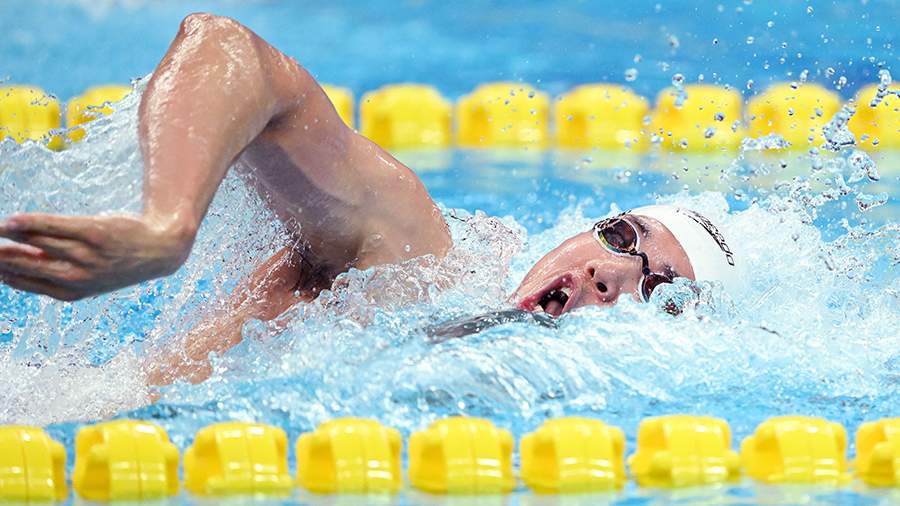The bicycle, which began as a simple and elegant invention a couple of centuries ago and was perfected for decades until the well-known modern model of 1885, has gained relevance in cities. Now it transcends its dimension as a mode of transport and is configured as a lifestyle of cities that want to return to being the social substrate of their citizens.
The mechanical evolution as a vehicle has only been surpassed by the mental evolution of the users and the cities that adopt it. There is no more energy efficient mode of transport (in units of energy consumed per person and to overcome a kilometer of distance): its energy consumption is a third of what we would consume walking. It is also the fastest way to travel short distances.
In addition to the economy in short trips in cities, physical exercise becomes important positive effects for health. Walking and cycling, included under the label of active mobility, are the great allies of doctors and of a healthy society.
The irruption of high-speed mechanized modes in cities – especially cars, with their poor maneuverability and great consumption of public space, but also motorcycles with their high accident rate – marginalized the most vulnerable modes for decades. Nevertheless, Large cities are already redirecting the imbalance based on tactical urban planning (enhanced by the covid-19 pandemic) that widens sidewalks, reduces space for traffic and offers a continuous and cohesive network of bike paths as an essential part of the section of streets. streets.
(Read: UN resolutely promotes the bicycle to combat climate change).
However, some conditioning factors that have not yet been fully resolved hamper the even more massive implementation of the bicycle: the possibility of theft; the scarcity of safe parking spaces on the street, at home and at destinations; the limited integration in urban mobility plans; the limited intermodality –parking spaces at train stations or bus stops, or the possibility of transporting the bicycle on trains and buses as the pioneering example of the Funi&bici de Ferrocarriles de la Generalitat de Catalunya–; overexertion in the face of difficult orography –in addition to physical effort–, and driver education for coexistence in the use of the street.
Public and shared
The European cities with the highest modal share of the bicycle were and continue to be the Dutch and Danish, between 23 and 35 percent. I rescue bicycle quotas of less than one percent (with data from the year 1998) both for a medium-sized city like Vitoria (which has around 250,000 inhabitants), today transformed into an example of sustainable mobility with several awards and declared European Green Capital 2012, as for a large city like Barcelona, which, due to its mountain-sea slope, had always been considered not made for bicycles. On the contrary, in a quarter of a century it has produced remarkable changes.
The cities of people who want to promote a lifestyle of proximity and conviviality among citizens are promoting the use of bicycles
In cities without a cycling tradition in southern Europe –perhaps we should speak of ‘expulsion’ from the urban sphere, since this cycling tradition and passion exists at a professional level, as we see in the Tour de France, in the Giro d’Italia and in the Vuelta Ciclista a España– it is important for the city to promote a system of shared public bicycles.
These systems are initiatives planned, led and financed by the cities that allow the bicycle to be reintroduced into the urban space under conditions that guarantee its success. From fixed bicycle stations with anchoring systems, it will design the necessary infrastructure on the streets, segregated from road traffic and pedestrian sidewalks.
It should be clarified that the systems cost money, but that financing (reducible with commercial advertising) is part of the mea culpa of a city that cornered (when it did not abandon) a clean, healthy and efficient mode of transport, in favor of motorized traffic that causes externalities. negative: accidents, air and noise pollution, barrier effect, etc.
For example, the shared bicycle system in Barcelona, called Bicing, implemented in March 2007, has been a social, political and media success. All this despite the fact that the haste in its planning contained several technical errors, already corrected.
Bicing has been essential and the trigger for the return and flourishing of the bicycle in Barcelona. The new Pedalem concession (Ferrovial, 2019-2029) includes 7,000 bicycles – initially 3,000 electric and 4,000 mechanical, with a tendency to invert that proportion –, 517 stations and 131,500 users.
An Ipsos study in 28 countries revealed that there is a great paradox: although the majority consider it an alternative to combat global warming, more than half think that its use is dangerous.
Source: © Ipsos. ‘Cycling Across the World’ survey. May 2022.
new systems
What comes first, the chicken or the egg? The answer to this question is always difficult, but it sure is never the chicken. At a functional level, everything depends on flows, interaction, speeds.
The space in a section of street is limited and is not usually able to fit all the functional needs: effective sidewalk of two meters on each side for pedestrians, sidewalk for outdoor businesses, trees and urban furniture, bus lane, lane for bicycles and PMVs (personal mobility vehicles, such as skateboards) scooter, segways, hoverboardunicycles, etc.), loading and unloading area for the urban distribution of goods, parking for people with reduced mobility, possible bus stop and some traffic circulation lane.
(You may be interested in: Bicycle trips: five trends that run through Europe).
When, as has been said, the bicycle share was less than one percent, it was difficult to justify reserving two meters or ten percent of a wide street for a cycle path with very low use. There was no critical mass. There already is. In fact, With Critical Mass or Critical Bike, the monthly demanding outings are designated in many cities around the world by bicycle users with the aim of raising awareness and introducing sustainable mobility and to improve the safety of cyclists in their cities.
Although the first Critical Masses took place in Stockholm in 1970, its internationalization began in San Francisco in 1992.
These systems all have an inflection point from which the balance pivots from one side to the other. It is important that the city or the administration lead, protect and finance a minimum supply model so that it stretches the potential demand that, without a minimum of functionality and safety conditions, will remain lethargic.
(Read: This is the shared bicycle system that arrives in Bogotá).
Bicycles and personal mobility vehicles (PMV) have similar behaviors of individual mobility. However, they can have two different speed ranges (in road safety, each increase of 10 kilometers per hour represents a step up in the threshold of insecurity): the walking speed of 10-15 km/h and the travel speed of 25 km /h (with electric motors).
Width of VMP-bicycle lanes (minimum two meters) is needed to accommodate these two speed ranges and even more width if it is intended to circulate in both directions. In Barcelona, bidirectional lanes are being eliminated for safety reasons; in Paris, some of the VMP-bike lanes are up to four meters long.
A lifestyle
The cities of people who want to promote a lifestyle of proximity and conviviality among citizens are promoting the use of bicycles. Paris with the city of the quarter of an hour; Barcelona, in turn, with the ‘superblocks’, whose concept has been generalized to encompass green corridors in peaceful streets – the intersection of two green corridors, magnified by the chamfers designed by the road, canal and port engineer Ildefonso Cerdá, constitutes a new pedestrian square of 40 meters by 40 meters, a meeting place for neighbors.
There is no other solution in Europe other than joining bicycles with personal mobility vehicles in the same segregated lanes, so they must be wide. However, it is not certain that electric bicycles and VMP converge conceptually (despite their similar features as vehicles) due to different chromosomes of their users. In the same way that despite the fact that trams (LRT) and electric articulated buses (BRT) may have similar features, they do not converge by different chromosomes of the sectors (rail and bus/automotive) either.

‘Bicing’ system in Barcelona.
The promotion of the bicycle is a fundamental instrument to achieve pacified, more humane cities. The urban network of bicycle paths can be extended to metropolitan areas (guaranteeing the safety of users with segregated infrastructure, especially at intersections and roundabouts): prohibitive distances (due to time) for low speeds are shortened with electric bicycles, which can circulate up to 25 km/h For example, In the Metropolitan Area of Barcelona, 83 percent of daily trips and 93 percent of internal mobility are less than 10 km.
Electric bicycles allow the universalization of their use and jump the physical limits of conventional bicycles for non-flat terrain (ramps) or long distances (sweat, fatigue). Its extension to last-mile logistics in the form of cargo tricycles (they can carry up to 200 kg) allows not only greater sustainability, but also greater operational efficiency, with savings of 10 to 15 percent in the old towns, where traffic of motorized vehicles is usually very restricted in Europe.
In addition to infrastructures for bicycles as a necessary condition, the use of bicycles continues to face parking safety and driver education as challenges.
More news in depth
Five places in the world that offer unusual benefits to repopulate
The reasons that led eight countries to change their names
Marijuana: these are the countries in the world where it is legal
FRANCESC ROBUSTÉ*
THE CONVERSATION (**)
Professor of Transport, Polytechnic University of Catalonia – BarcelonaTech. Article written in collaboration with Silvia Casorrán, environmentalologist attached to the management of the chief architect of the Department of Urban Ecology of the Barcelona City Council. (**) The Conversation is a non-profit organization that seeks to share
#Bicycle #cities #lifestyle #replicate









